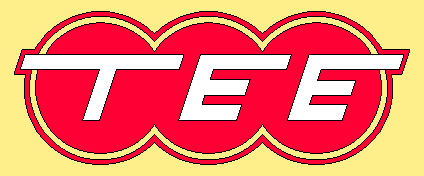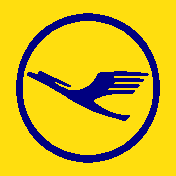
Unfortunately the owner,creator and writer of these pages, Dik Winter, has passed away.
And unfortunately his site regarding the TEE - in fact all his pages - has been removed.
I have taken the freedom to restore his site in order to have it preserved, since it contains a lot of pristine information over the Trans Europ Express.
I have decided to have two versions, an original version and a continued version. The continued version will be updated slowly with all the missing information to the best of
my abillity.
|
The Trans Europ Express, for some people magic, for others just history.
However, it did even inspire one movie director:
Alain Robbe-Grillet for his film Trans Europ Express (1966).
The TEE network was set up in 1957 following an idea of Ir. F.Q. den
Hollander, president-director at that time of the Dutch railways
company (NS). It was a network jointly operated by the railways
of Germany (DB), France (SNCF), Switzerland (SBB-CFF-FFS), Italy (FS) and,
of course, the Netherlands. (Note: although some trains operated through
Belgium from the beginning, the railway company (SNCB-NMBS) joined only in
1964. Luxembourg (CFL) also did join at some time, but I do not know
when.) The service was based on a number of principles:
- Diesel traction
- Because of the many different kinds of current used in the different
countries it was thought at that time that this would greatly speed up
border crossing. Moreover, at that time many border crossing sections
were not yet electrified. In 1961 with the introduction of the Swiss
trainsets that accepted 4 kinds of current this principle was abandoned.
- Trainsets
- The reason for this principle is the shorter stopping time at stations
that require a change of direction. Because trainsets are fairly fixed
in size (only the German VT11 class had some freedom), and en-route changes
are very time consuming, this principle soon lead to problems on the
Paris-Brussels-Amsterdam route. While
Paris-Brussels was in very high demand, Brussels-Amsterdam was much less so.
This already soon lead to relief trains on the Paris-Brussels section. In
1963 (with the introduction on this route of locomotive hauled trains) the
principle was abandoned.
- International
- Originally the idea was to promote only international routes as TEE
routes. This idea was abandoned in 1965 with the introduction of the
French le Mistral and the German
Blauer Enzian. The reason to abandon
this principle is very clear: there are many much longer national routes
than some of the international TEE routes.
- Luxuary rolling stock
- This idea has always been maintained: luxury, hence 1st class only,
with catering on all routes. This in almost all cases has meant that the
rolling stock was especially built for TEE services, only to be downgraded
after many years of sevice.
- Custom control en-route
- This idea was new at that time, before that time in many cases you had
to leave the train when a border was crossed, resulting in a very long
waiting time. Currently (and already since the early sixties) this is
standard in Europe. So, while this was a renovation at that time, it held
that status only shortly.
- Running dayly
- This was to simplify the concept for the public; you could always
rely on a train running. This idea was given up in February 1968 with
the introduction of le Lyonnais.
Later many more trains were not running daily and not during high
summer or other times.
The network grew in the course of the years, adding three more countries:
Spain (RENFE), Danmark (DSB) and Austria (ÖBB) until its height in
1974. But of these three only RENFE became a TEE member, the other two
countries had TEE's running through them but the rail administrations never
were members. From that time more and more former TEE trains got replaced by
other trains giving the same kind of service but allowing also 2nd class.
In 1979 DB (Germany) completely restructured the network with the coming
of the new national IC services, resulting in succesively less TEE services
and more IC services in the course of time. By 1984 most services were
abandoned, leaving only some national services in (mostly) Italy and France
and a very few international services. Most were replaced by the at that
time new international intercity network that provided both 1st and 2nd
class.
 In 1987 a new service was introduced, the international
EuroCity services for international services, both 1st and 2nd class. In a
number of cases this was used as replacement for old TEE services but in
France some old TEE services still remained. Also there was permission to
retain Gottardo and
Rheingold as international TEE, but the last
one changed along to EC. Finally in about 1990 also
the last services were dropped. But in 1993 on the Paris-Brussels
route TEE services were resurrected, but these replaced EC services by
name only and were both 1st and 2nd class; they were
replaced in 1995 by TGV services.
In 1987 a new service was introduced, the international
EuroCity services for international services, both 1st and 2nd class. In a
number of cases this was used as replacement for old TEE services but in
France some old TEE services still remained. Also there was permission to
retain Gottardo and
Rheingold as international TEE, but the last
one changed along to EC. Finally in about 1990 also
the last services were dropped. But in 1993 on the Paris-Brussels
route TEE services were resurrected, but these replaced EC services by
name only and were both 1st and 2nd class; they were
replaced in 1995 by TGV services.
 A strange member of the family of TEE services is the
Lufthansa Airport Express, introduced in
Germany in 1983. These were against many principles of the TEE operation
and indeed were not called TEE service in publications. Their designation
as TEE was only done to insure priority.
A strange member of the family of TEE services is the
Lufthansa Airport Express, introduced in
Germany in 1983. These were against many principles of the TEE operation
and indeed were not called TEE service in publications. Their designation
as TEE was only done to insure priority.
Currently the information about the TEE's available can be accessed through:
Please mail comments, additions etc. and
have a look at the remaining questions.
Sources:
A full catalog of my transport library
is also available.
Books
[Mer87] Maurice Mertens
TEE - Trans Europ Express
ISBN 3 87094 114 6
Alba Buchverlag, Düsseldorf, Germany, 1987
Translation by Berndt von Mitzlaff:
Les TEE - Trans Europ Express
Editions La Vie du Rail, Paris, France, 1987
[Wil67] G. L. S. Willemse
Trans Europ Express
Alk 134
De Alk, Alkmaar, Netherlands, 1967?
Articles
[EbM87.5] Harald Schön
30 Jahre TEE
Die Geschichte des Trans-Europ-Express (1)
Eisenbahn Magazin, 1987, vol. 5, pp 30-39
[EbM87.6] Harald Schön
30 Jahre TEE
Die Geschichte des Trans-Europ-Express (2)
Eisenbahn Magazin, 1987, vol. 6, pp 28-34
[EbM87.6a] Friedhelm Ernst
Auf Wiedersehen, Rheingold
Eisenbahn Magazin, 1987, vol. 6, pp 35-39
[OdR82.6] R. Ankersmit
25 jaar Trans Europ Express
Op de Rails, 1982 (50), vol. 6, pp 154-168
[OdR82.9] R. Ankersmit
25 jaar Trans Europ Express (2)
Op de Rails, 1982 (50), vol. 9, pp 247-258
[OdR83.4] R. Ankersmit
25 jaar Trans Europ Express (3)
Op de Rails, 1983 (51), vol. 4, pp 96-104
[OdR83.5] R. Ankersmit
25 jaar Trans Europ Express (4)
Op de Rails, 1983 (51), vol. 5, pp 128-134
[OdR83.8] R. Ankersmit
25 jaar Trans Europ Express (5)
Op de Rails, 1983 (51), vol. 8, pp 225-233
[OdR83.11] R. Ankersmit
25 jaar Trans Europ Express (6)
Op de Rails, 1983 (51), vol. 11, pp 323-330
[OdR85.11] R. Ankersmit
25 jaar Trans Europ Express (7)
Op de Rails, 1985 (53), vol. 11, pp 307-317
[RHy82.8] Hans Hanenbergh
Vijfentwintig jaar TEE
Rail Hobby, 1982, vol. 8, pp 224-231
Other
Timetables from various railway companies, special TEE timetables, etc.
 In 1987 a new service was introduced, the international
EuroCity services for international services, both 1st and 2nd class. In a
number of cases this was used as replacement for old TEE services but in
France some old TEE services still remained. Also there was permission to
retain Gottardo and
Rheingold as international TEE, but the last
one changed along to EC. Finally in about 1990 also
the last services were dropped. But in 1993 on the Paris-Brussels
route TEE services were resurrected, but these replaced EC services by
name only and were both 1st and 2nd class; they were
replaced in 1995 by TGV services.
In 1987 a new service was introduced, the international
EuroCity services for international services, both 1st and 2nd class. In a
number of cases this was used as replacement for old TEE services but in
France some old TEE services still remained. Also there was permission to
retain Gottardo and
Rheingold as international TEE, but the last
one changed along to EC. Finally in about 1990 also
the last services were dropped. But in 1993 on the Paris-Brussels
route TEE services were resurrected, but these replaced EC services by
name only and were both 1st and 2nd class; they were
replaced in 1995 by TGV services.
 A strange member of the family of TEE services is the
A strange member of the family of TEE services is the
